Trees of life
Early European explorers of California consistently described open, park-like woods dominated by oaks in areas where the forest transitions to a zone mainly of conifers such as pines, fir and cedar.
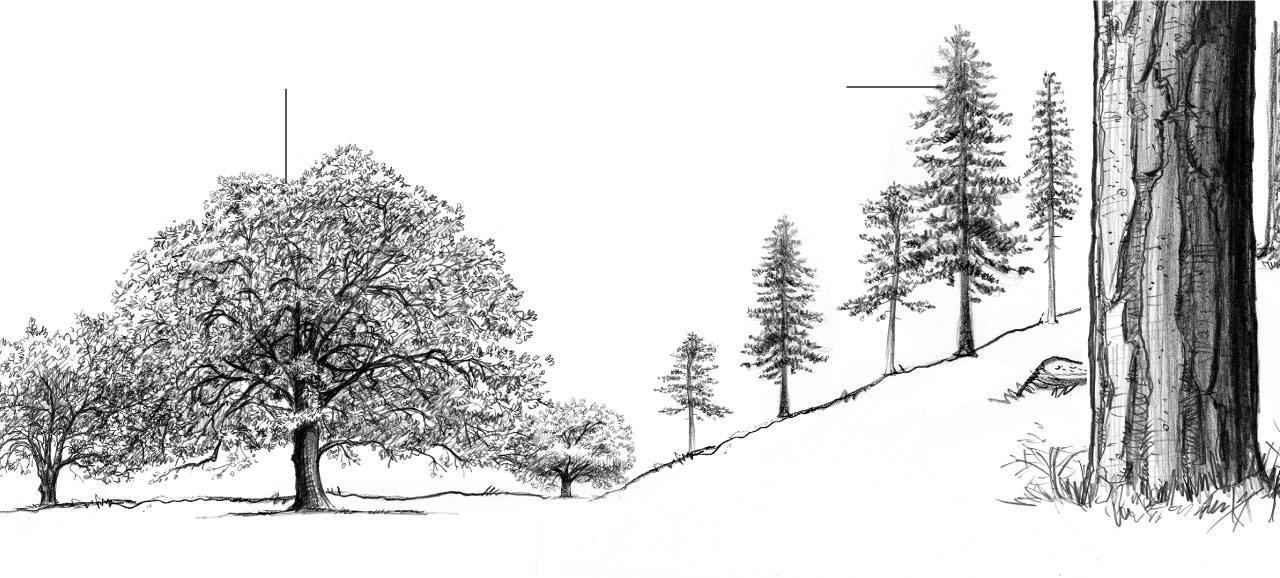
Oak
Pine
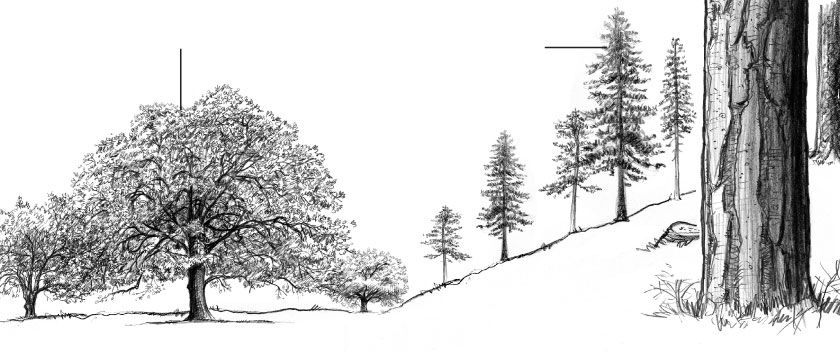
Oak
Pine
The park-like woodlands were no accident. For thousands of years, Indigenous people have tended these woods. Oaks are regarded as a “tree of life” because of their many uses. Their acorns provide a nutritious food for people and animals.
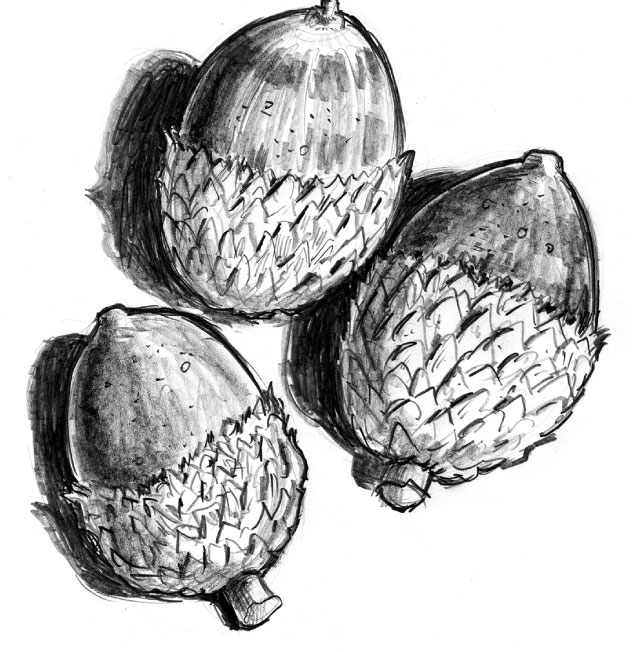
Oak acorns
Indigenous people have used low-intensity fires to clear litter and underbrush and to nurture the oaks as productive orchards. Burning controls insects and promotes growth of culturally important plants and fungi among the oaks.
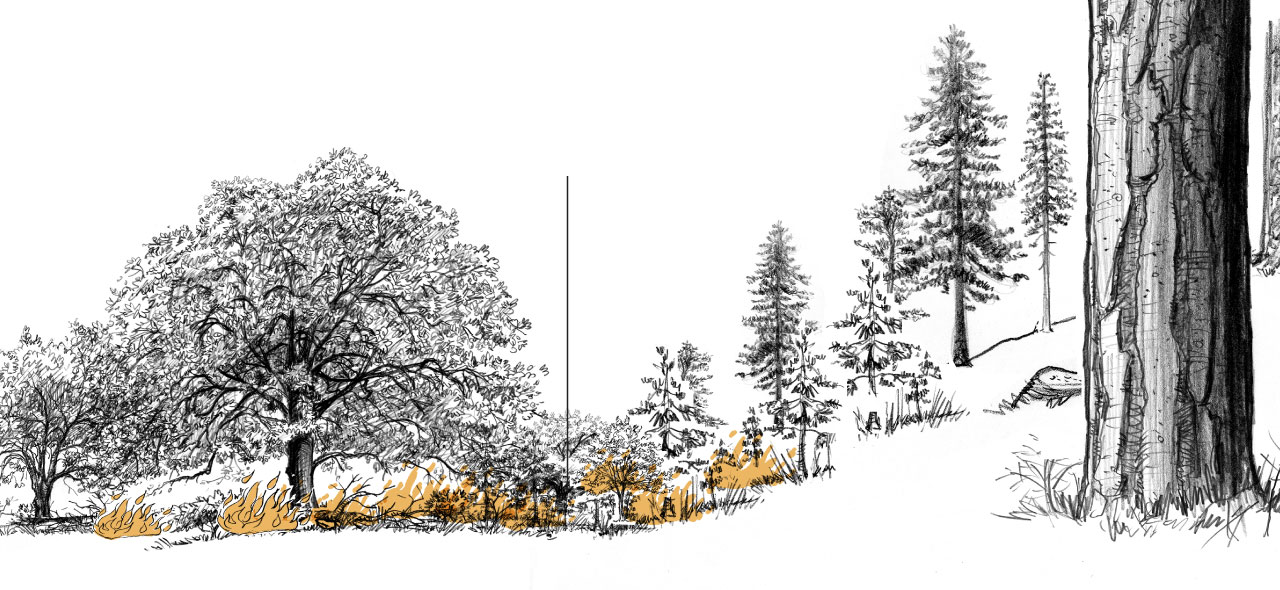
Debris, brush and small trees
consumed by low-intensity fire.
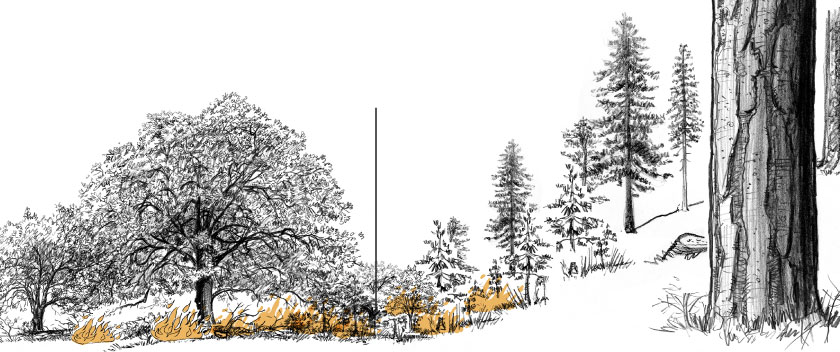
Debris, brush and small trees consumed by low-intensity fire.
This stewardship reduced the risk of devastating wildfires. Periodic clearing of underbrush and understory tree growth reduces ladder fuels that can channel flames into the treetops.
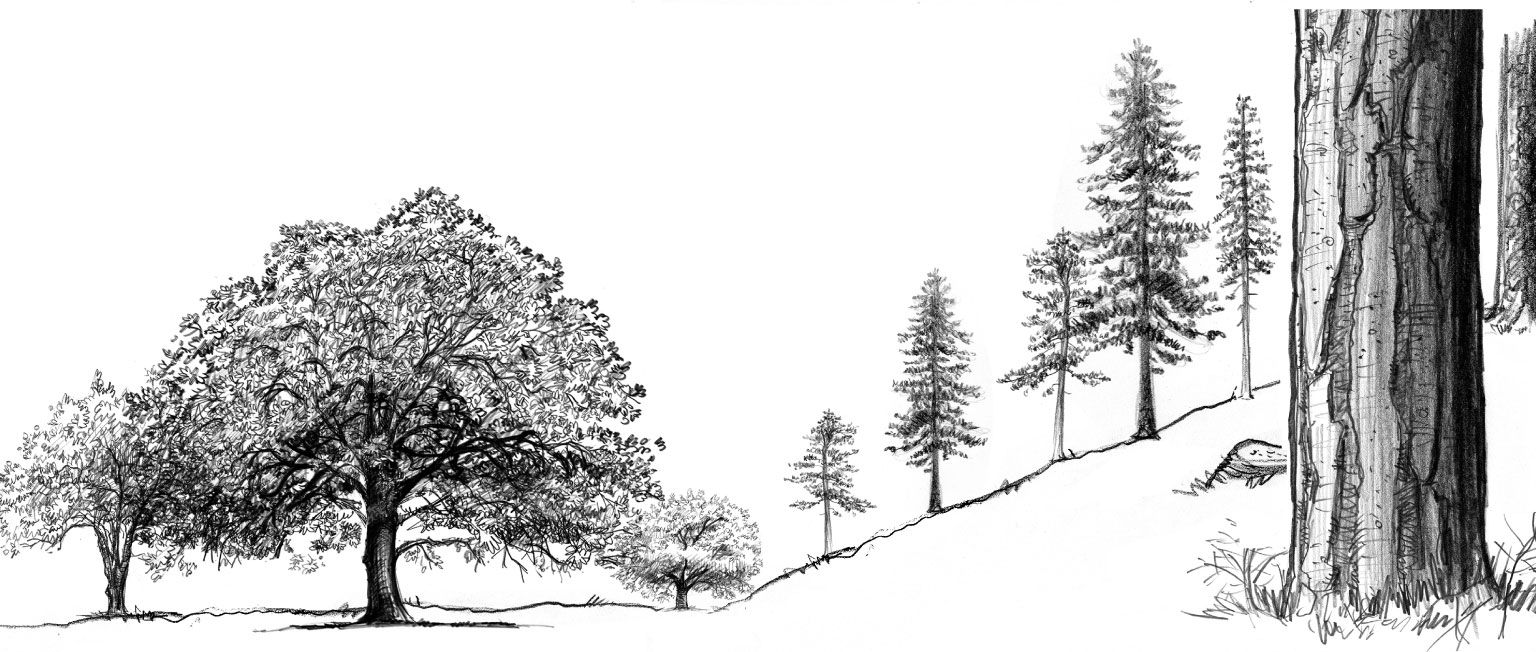
Times reporting, USDA
Paul Duginski LOS ANGELES TIMES